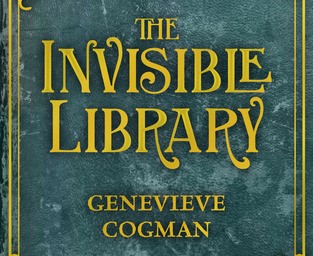I find I’ve grown into Cogman’s novels set in parallel worlds connected through her great Library. Her confidence and comfort writing in this world that she’s created also seems to have reached new levels with this latest instalment, which also benefits from not needing to introduce the characters, since we know them from the previous novel.
Despite her heroism in saving the day in the previous novel, Irene the librarian is on probation for breaking quite so many rules in the process. She is therefore given sub-par assignments that are riskier than usual, but she seems to be taking it in stride. Meanwhile, the Library, eternal and unmovable and outside of space and time, is under attack. Quite how this is being achieved is not understood, but old enemies rapidly appear in central roles and a conspiracy begins to appear on the stage.
Our heroine, relegated to the sidelines by her superiors, finds herself rapidly drawn back to the center of current events, due in large part to a pre-existing relationship with the malefactor-in-chief. As she tries to play by the rules of the library, while nevertheless using her connection to the enemy to draw him out and foil (or at least understand) his plans, she comes to realise that she is not the only one preparing traps and moving chess-pieces on the board, and that everyone is not always what they seem.
The adventure is fun and the world and its rules are entertaining, but it is the characters that make the novel. It’s not that they’re drawn with incredible depth, in fact its rather the opposite, with Vale, Irene, Kai and almost every other character playing almost entirely to their stereotypes. With these simple notes, however, Cogman composes a highly entertaining score, and the pages turn easily as the story develops and the characters play their expected parts to perfection.
The founding premise of the series, of parallel worlds each on a spectrum between orderly or chaotic, allows Cogman immense freedom to invent universes inspired by the works of Arthur Conan Doyle, with a shot of steampunk and the occasional flying sleigh or talking bear. The implausible becomes plausible when things like magic, sorcery and impossible technologies are justified as manifestations of chaos that grows and fades as opposing forces of the fae and dragons bring their influence to bear on each world. More than in the previous novels, it becomes apparent that one cannot exist without the other, and that chaos and order do not correlate nicely with “wrong” and “right”, and perhaps this will be further developed in future novels that are sure to come.




